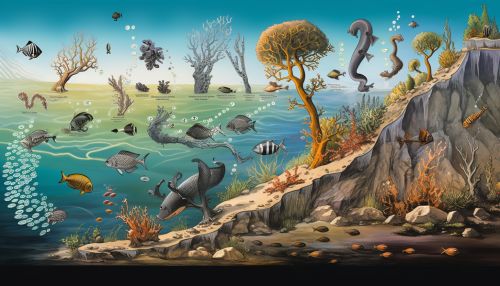Metazoan
Introduction
Metazoans, also known as animals, represent a complex and diverse group of multicellular organisms that are characterized by their ability to move voluntarily, their heterotrophic mode of nutrition, and their unique cell structure without a cell wall. Metazoans include a wide range of organisms, from simple sponges to complex mammals, and they play a crucial role in the Earth's ecosystems.
Evolution
The evolution of metazoans is a topic of considerable scientific interest. The first metazoans are believed to have appeared in the Ediacaran period, around 600 million years ago. These early organisms were likely simple, soft-bodied creatures, similar to modern-day sponges or jellyfish. Over time, metazoans evolved into a wide variety of forms, including the first vertebrates, the ancestors of modern-day fish, birds, reptiles, and mammals.


Classification
Metazoans are classified into several phyla, each of which represents a major lineage of multicellular animals. These include the Porifera (sponges), Cnidaria (jellyfish, sea anemones, and corals), Platyhelminthes (flatworms), Nematoda (roundworms), Annelida (segmented worms), Mollusca (snails, clams, and cephalopods), Arthropoda (insects, spiders, and crustaceans), Echinodermata (starfish and sea urchins), and Chordata (vertebrates).
Anatomy and Physiology
The anatomy and physiology of metazoans are incredibly diverse, reflecting the wide range of habitats and lifestyles that these animals occupy. However, all metazoans share certain fundamental characteristics, such as the presence of specialized cells and tissues, and the ability to move voluntarily.
Reproduction and Life Cycle
Metazoans exhibit a wide range of reproductive strategies, from asexual reproduction through budding or fragmentation, to sexual reproduction with complex life cycles involving larval stages. The life cycle of a metazoan typically involves growth, development, maturation, reproduction, and death.
Ecology
Metazoans occupy a wide range of ecological niches, from the deepest ocean trenches to the highest mountain peaks. They play a variety of roles in their ecosystems, including as primary producers, consumers, and decomposers.
Conservation
Many metazoan species are threatened by human activities, such as habitat destruction, pollution, and climate change. Conservation efforts are therefore crucial to ensure the survival of these diverse and fascinating organisms.
